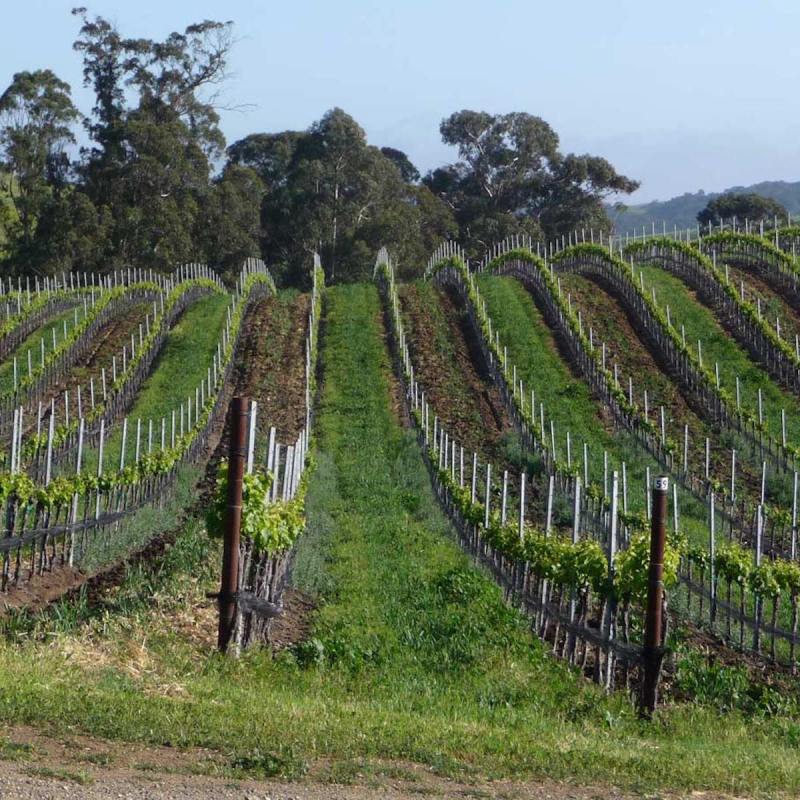
Most people have heard of Hearst Castle, California Polytechnic State University, the Madonna Inn, and the plethora of wineries that dot the area. Yet it was not until I had a chance to explore like a local that I understood how much San Luis Obispo has to offer visitors.
Videos by TravelAwaits
Located on Highway 101 midway between San Francisco and Los Angeles, this Central Coast city is inland 11 miles from the Pacific Ocean. The climate is much like that of the Mediterranean. Farmers and vintners take advantage of the variation of elevations on the rolling hills and plant a variety of fruits, vegetables, and grapes.
This trip was partially hosted, but as usual, I often took the roads less traveled and dug deep into the area’s culture by talking extensively with locals. Traveling alone has advantages because it forces you to strike up conversations.
Pro Tip: If you are going to speak like a local, you have to say SLO (pronounced slow) instead of San Luis Obispo.

1. Mission San Luis Obispo
In 1772, the Mission San Luis Obispo became a reality. This mission was the first structure in the area. As a result, its presence helped establish San Luis Obispo as one of the oldest communities in California. The mission was the 5th of 21 missions built by the Spaniards in the western territory. Uncharacteristic of other missions, this one had a bell tower and was constructed in the form of an L.
Once gold was discovered in California, entrepreneurs quickly saw the need to feed the massive number of people coming to seek their fortune. The fertile land provided conditions for a wide variety of produce. Cattle thrived in the climate and roamed the nearby hills. With ocean breezes and foggy mornings, farmers discovered it was a great place to grow grapes after testing the conditions for growing them from cutting from the nearby mission.
Pro Tip: The Spaniards brought cuttings from Europe and planted them at the missions for wine used at the mass.

2. Wolff Vineyards
The Wolff Vineyards, located about 10 minutes from downtown SLO, is definitely a local gathering place. Situated on 125 acres of picturesque hills, this winery started in 1976 with 50 acres of Chardonnay grapes. In 1999, the winery was purchased by the Wolff family, who have made it a family affair with all members playing a supportive role. Today, they grow five different grape varieties used in their artisan small-batch wine.
With a glass of chardonnay in hand, I wandered over to a couple sitting at a table with an umbrella to shield them from the noon sun. They asked me to join them. Nearby was a man sitting alone. We could tell he was eavesdropping on our conversation, so we asked him to join us. None of the people were tourists. The couple said they come here once a week to enjoy the great view with their favorite wine. The man said, “I’m here for a wedding. I used to come here when I was going to the university.”
Before long, Clint Wolff, manager of the tasting room, joined us. Then the conversation turned to the weekend concerts. All three smiled, for there was something special about these concerts, and I was about to find out. First of all, they never advertised them because the evenings are so well-known by locals they stream in with their picnics and chairs to listen to some of the fine local talents perform. The venue is already starting to get overwhelmed with parking issues, so no advertising is necessary. Oops, it looks like I just let the secret out.

3. San Luis Obispo Museum Of Art
Just down the plaza from the San Luis Obispo Mission, a significant contributor to the cultural life of locals is the San Luis Obispo Museum of Art. They take art classes, students have tours, and the many yearly contemporary exhibit openings bring community members together for an evening. Not being afraid to take a risk, the executive director and curator reach out to their international contacts and bring in artists that challenge and stretch the minds of their constituents.
Presently, they are conducting a capital campaign to build a new museum. However, in the meantime, artists submit a concept for painting murals on the entire building. One artist is selected to envelop the whole building. When you visit, have a local point you in the right direction to see the outside at a minimum.
4. Giuseppe’s Cucina Rustica
Admittedly, I was hungry, so when the staff members from the art museum said they wanted to take me to their favorite place for lunch, I happily obliged. We went for a short walk past the Mission and walked into Giuseppe’s Cucina Rustica, located in the heart of SLO.
The décor included a vintage car, an old bank vault, and a menu that was equally different from most Italian restaurants. I was informed that the menu constantly changes, for most of the food on the menu is produced at the owner’s Difronzo Farms. It seems the owners were early practitioners of the farm-to-fork concept. The fresh heirloom tomatoes were already enough to win me over. However, I ate every morsel of salad laden with seafood.
5. Junk Girls
While some national brand stores are sprinkled throughout the city streets, the locally owned ones caught my attention. Take, for example, Junk Girls. Leaving the corporate world, two women decided to take their interests in recycling, repurposing, and shopping for antiques and turn them into a business. Today, this eclectic collection of products includes art, jewelry, lighting, antiques, and brass creations by Melissa.
Spiritual stores are abundant, and sports-related stores are popular with university students. It is a delight to browse downtown, and San Luis Obispo Creek is always nearby, with lovely benches if you want to take a break.
6. Park 1039
Fortunately, I was to meet a local friend for happy hour at Park 1039. Again, it was one of those places I’m not sure I would have stopped, for I had little knowledge of the concept of this upscale-looking lounge-like space right in the middle of downtown SLO. With beautiful late-afternoon weather, we sat outside at the well-appointed parklet that insulated itself from the street noise by high hedges.
Since she was in the know, she ordered what I thought was an ordinary cheese plate. She smiled when I told her I was from Wisconsin, so I was pretty hard to please. She replied, “I’m not worried.” Soon the owner came out, and the education began. First, he suggested a wine that would be well paired with the cheese. Then he shared how it is his goal to find the finest cheese and wines in the world. After what I experienced, he is on the right track. He plans to open more places — always called Park, with just the street number added.

7. Creamery Marketplace
Dairy products from the area were shipped on the Southern Pacific Railroad to various places in the state. When the law passed that milk must be pasteurized, it became essential there be a central place for pasteurization. Thus, the birth of the Creamery in SLO.
Years later, the space was no longer needed, so the building languished and was on the verge of being torn down. City fathers stepped in because they recognized this building was of historical value. Significant recycling of the space took place in the 1970s, which resulted in the area becoming a place where locals came to an open-air market with artisans, food, and floors. By 2014, the area needed to be upgraded.
New owners came and built new buildings surrounding the original creamery. Now it is officially known as The Creamery Marketplace. Today, visitors are slowly finding this place because there are many stores, restaurants, and galleries owned and operated by locals.
8. Hotel Cerro
Parking is at a premium in SLO. Thus, I was delighted that Hotel Cerro, where I would spend two nights, had underground parking. After checking in, I went up to my room. I opened the patio door and smiled as I saw one of my favorite outdoor accessories, a firepit with plants and comfy sofas filling out the space — the perfect place to enjoy the mild California evening.
My ultra-contemporary room’s centerpiece was a soaking tub filled by a waterfall faucet from the ceiling. Yes, I tried it out and had a relaxing lavender-scented bubble bath.
After further exploration, I learned several locals live in this multi-level complex that takes up a block. One of them told me that having the ability to go to the roof-top garden, with a seating area, is the perfect place to unwind after a day of work. Then with the spa in the complex, they can stay in their bathrobe, and no one cares.
At ground level is the restaurant Brasserie SLO. I had drinks and dinner there. Let’s just say it would be dangerous for me to live so close to the restaurant, for the food is excellent and addictive. I’m still thinking about how the halibut melted in my mouth.
I had no preconceived idea about SLO; all I had heard about it was a university city. By the way, locals repeatedly mention how the university is becoming renowned for its department of viticulture, the study of grapes. Its proximity to the Paso Robles and other communities known for their wines provides a resource for locals to expand their education and keep up with wine-making trends.
One more thing: If you enjoy riding bicycles, this town is made for you. Consider joining one of the weekly organized rides through the city and starting near the plaza. This city is beautiful, and I can only imagine how much fun it would be to ride a bike and discover even more special places that make locals proud to call this their home.
